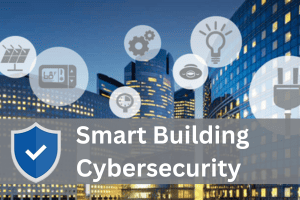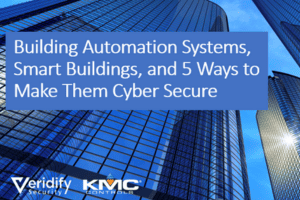How to Conduct a Cybersecurity Risk Assessment for Smart Buildings
As smart buildings are becoming increasingly prevalent, the integration of advanced technologies into the infrastructure of these structures introduces a myriad of cybersecurity risks. Conducting a comprehensive cybersecurity risk assessment is imperative to identify potential threats, vulnerabilities, and safeguard the integrity of smart building systems. This blog post will explore key steps and considerations involved in conducting a cybersecurity risk assessment for smart buildings.
Understanding the Components of a Smart Building
Before delving into the risk assessment process, it’s essential to grasp the complex ecosystem of a smart building. These structures are equipped with interconnected devices and systems, including sensors, IoT devices, Building Management Systems (BMS), access control systems, and more. The interconnectedness of these components forms the backbone of smart building operations, enhancing efficiency, energy management, and occupant comfort. However, this very connectivity also opens the door to potential cyber threats.

The Importance of a Smart Building Cybersecurity Risk Assessment
A risk assessment for smart buildings serves as a proactive approach to cybersecurity. It involves identifying, analyzing, and evaluating potential risks that could impact the confidentiality, integrity, and availability of building systems and data. By understanding these risks, building owners and facility managers can implement effective security measures to mitigate the potential impact of cyber threats.
Key Steps in Conducting a Cybersecurity Risk Assessment for Smart Buildings
-
Define Assets and System Boundaries:
Identify and list all assets within the smart building ecosystem, including devices, networks, and software. Clearly define the boundaries of the systems to be assessed.
-
Identify Threats and Vulnerabilities:
Conduct a thorough analysis to identify potential threats that could exploit vulnerabilities in smart building systems. Consider both external and internal threats, ranging from cyber criminals to disgruntled employees.
-
Assess Potential Impact and Likelihood:
Evaluate the potential impact of identified threats on smart building operations. Consider the likelihood of these threats occurring and their potential consequences. This step helps prioritize risks for mitigation efforts.
-
Determine Risk Levels:
Assign risk levels based on the combination of the impact and likelihood assessments. This step helps organizations focus on addressing the most critical risks first.
-
Implement Mitigation Strategies:
Develop and implement strategies to mitigate identified risks. This may involve adopting security best practices, deploying cybersecurity solutions, and ensuring that systems are regularly updated and patched.
-
Establish Incident Response Plans:
Develop robust incident response plans to address and mitigate the impact of potential security incidents. This includes clear communication protocols, containment strategies, and recovery procedures.
-
Conduct Regular Vulnerability Assessments:
Regularly assess the vulnerability landscape of smart building systems. This ongoing process helps identify new threats and vulnerabilities that may emerge over time.
-
Employee Training and Awareness:
Ensure that employees and stakeholders are well-informed about cybersecurity best practices. Conduct regular training sessions to raise awareness about potential threats and the importance of adhering to security policies.
-
Review and Update Security Policies:
Periodically review and update security policies to align with the evolving threat landscape and technological advancements. This ensures that security measures remain effective and up-to-date.
-
Collaborate with Industry Experts:
Engage with cybersecurity experts and leverage industry standards and best practices. Collaboration with professionals who specialize in smart building security can provide valuable insights and recommendations.
Conclusion
In the rapidly advancing landscape of smart buildings, the need for robust cybersecurity measures cannot be overstated. Conducting a thorough risk assessment is a foundational step in building a resilient defense against potential threats. By understanding the interconnected nature of smart building systems, identifying vulnerabilities, and implementing effective mitigation strategies, building owners and operators can create a secure and sustainable environment for occupants while embracing the benefits of modern technology. A proactive approach to cybersecurity is not only essential for protecting valuable assets but also for fostering trust in the continued development and integration of smart building technologies.
—
Blog Post Summary – All of our posts listed on one page back through 2019
See the slides below to learn more about cybersecurity for building controls and smart buildings.
Keywords: cybersecurity risk assessment, smart buildings
Follow Veridify on LinkedIn.




